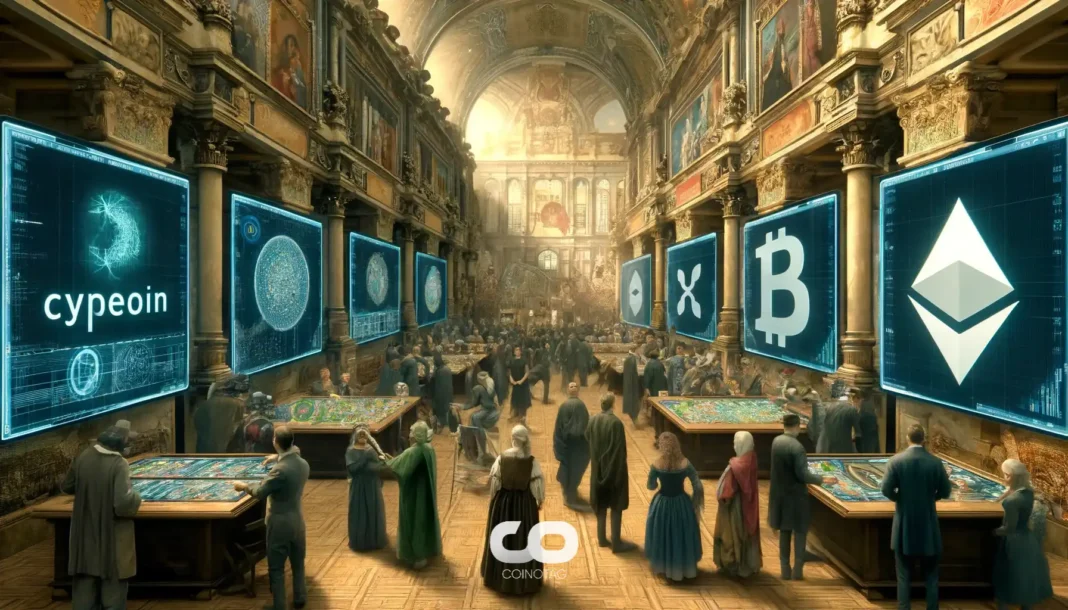-
Solana and Ethereum are both enhancing their blockchain capacities, signaling a pivotal shift in network scalability and transaction efficiency.
-
Solana’s recent 20% increase in block capacity to 60 million compute units (CUs) aims to reduce fees and improve user experience amid growing demand.
-
According to Mert Mumtaz, CEO of Helius, this upgrade allows more transactions per block, promising better expressiveness for developers and smoother operations for users.
Solana and Ethereum boost block capacity to enhance scalability, reduce fees, and support growing transaction volumes in the evolving crypto ecosystem.
Solana’s Block Capacity Expansion: A Strategic Move to Enhance Network Throughput
On Tuesday, Solana implemented a significant upgrade, increasing its block capacity by 20% to 60 million compute units (CUs). This adjustment directly impacts the network’s ability to process more transactions per block, addressing previous bottlenecks caused by high transaction volumes. Compute units represent the computational effort required for each transaction, and by raising this limit, Solana effectively expands its throughput potential. This upgrade is particularly timely given the network’s historical challenges with transaction congestion during peak demand periods, such as the memecoin surge earlier this year.
Future Prospects: Doubling Capacity and Infrastructure Enhancements
Looking ahead, Solana’s development community is actively exploring proposals to further increase block capacity to 100 million CUs. Lucas Bruder, CEO of Jito Labs, emphasizes that the original block limits were designed to ensure network stability by preventing leaders from overloading blocks. However, current traffic patterns suggest that the network can sustain higher limits without compromising performance. This planned expansion aims to provide additional capacity, enabling Solana to support more complex decentralized applications and higher transaction volumes while maintaining low fees and fast confirmation times.
Market Response: Solana’s Price Surge and Institutional Interest
Following the capacity upgrade announcement, Solana’s native token (SOL) experienced a notable price increase, surpassing the $200 mark briefly and maintaining strong momentum. This price action reflects growing investor confidence and institutional interest. Nasdaq-listed DeFi Development Corp is nearing a million-dollar treasury in SOL holdings, while Bitcoin mining firm Bit Mining has announced strategic plans to build a substantial Solana token treasury, signaling a broader shift towards Solana’s ecosystem among major players. These developments underscore the network’s increasing relevance in the competitive blockchain landscape.
Ethereum’s Block Gas Limit Increase: Parallel Scalability Efforts
Ethereum has also taken steps to enhance its network capacity by raising the block gas limit to just under 45 million units as of Tuesday. This marks the first significant increase since February, when the limit was raised from 30 million to 36 million. The gas limit defines the maximum amount of computational work allowed per block, and increasing it enables Ethereum to process more transactions, potentially easing network congestion and reducing gas fees. This move aligns with Ethereum’s ongoing efforts to improve scalability ahead of future protocol upgrades.
Comparative Insights: Solana vs. Ethereum Scalability Strategies
While both Solana and Ethereum are expanding their block capacities, their approaches reflect differing architectural philosophies. Solana’s compute units focus on transaction complexity and execution, allowing for granular control over block workload. Ethereum’s gas limit directly caps computational resources per block, influencing transaction throughput and fee dynamics. These enhancements are crucial as both networks contend with rising demand from decentralized finance (DeFi), non-fungible tokens (NFTs), and other blockchain applications. Observing how these upgrades impact network performance and user experience will be essential for stakeholders.
Conclusion
Solana’s and Ethereum’s recent block capacity increases represent strategic responses to growing transaction demands and scalability challenges. By raising compute units and gas limits respectively, both networks aim to enhance throughput, reduce fees, and improve overall user experience. These upgrades not only reflect technical progress but also bolster investor confidence, as evidenced by Solana’s price rally and institutional accumulation. Continued monitoring of these developments will provide valuable insights into the evolving dynamics of blockchain scalability and adoption.







